



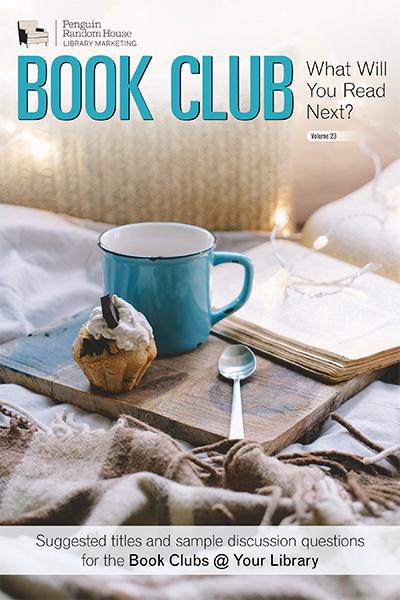












978-0-593-08493-9 | $28.00/$37.99C | Putnam | HC e 978-0-593-08494-6 | ] DN: 978-0-593-74203-7 LP: 978-0-593-74379-9
By the “master of thinly veiled secrets often kept by women who rage underneath their delicate exteriors” (Kirkus Reviews), Beware the Woman is Megan Abbott at the height of her game. For readers of Mexican Gothic and The Last House on Needless Street.


Newly married and with a baby on the way, Jacy and her new husband, Jed, embark on their first road trip together to visit his father, Dr. Ash, in Michigan’s far-flung Upper Peninsula. The moment they arrive at the cottage, Jacy feels bathed in love by the warm and hospitable Dr. Ash.
But their Edenic first days take a turn when Jacy has a health scare. Suddenly, whispers about Jed’s long-dead mother and complicated family history seem to eerily impinge upon the present, and Jacy begins to feel trapped in the cottage, her every move surveilled, her body under the looking glass. But are her fears founded or is it paranoia, or cabin fever, or—as is suggested to her—a stubborn refusal to take necessary precautions? The dense woods surrounding the cottage are full of dangers, but are the greater ones inside?
1. Author Megan Abbott prefaces Beware the Woman with a quote from Erica Jong. Discuss this quote as it relates to the title. How did this prime your reading of the text?
2. From the beginning, we witness a certain ferocity to Jed and Jacy’s relationship. Discuss the impact of starting the story where it begins—with Jed and Jacy on their way to Dr. Ash.
3. Early on, Jacy’s Mother tells her, “We all marry strangers.” To what extent do you think this is true, or does it suggest more about Jacy’s mother?
4. The idea of consciousness is explored throughout Beware the Woman. In the context of this story, what does it mean and take to be “awake,” for each of the characters?
5. Caretaking is a big theme in the novel. How do the women in this story protect their own, and each other? How does this contrast how the men nurture others in this story?
6. A shocking act of violence is revealed toward the end of the novel. How did you react to the incident?
For more discussion questions visit: TinyUrl.com/BewaretheWomanBCK
978-0-593-31733-4 | $27.00/$37.00C | Pantheon | HC e 978-0-593-31734-1 | ] DN: 978-0-593-66914-3


READERS’ ADVISORY:
For fans of Colson Whitehead, Marlon James, Tommy Orange, and James McBride.


A READ WITH JENNA BOOK CLUB PICK
Loretta Thurwar and Hamara “Hurricane Staxxx” Stacker are the stars of Chain-Gang All-Stars, the cornerstone of CAPE, or Criminal Action Penal Entertainment, a highlypopular, highly-controversial, profit-raising program in America’s increasingly dominant private prison industry. It’s the return of the gladiators and prisoners are competing for the ultimate prize: their freedom.
In CAPE, prisoners travel as Links in Chain-Gangs, competing in death-matches for packed arenas with righteous protestors at the gates. Thurwar and Staxxx, both teammates and lovers, are the fan favorites. And if all goes well, Thurwar will be free in just a few matches, a fact she carries as heavily as her lethal hammer. As she prepares to leave her fellow Links, she considers how she might help preserve their humanity, in defiance of these so-called games, but CAPE’s corporate owners will stop at nothing to protect their status quo and the obstacles they lay in Thurwar’s path have devastating consequences.
1. Chain-Gang All-Stars is a work of speculative fiction that immerses readers in the United States of the near future, a technologically advanced society that is still troubled and defined by the laws, institutions, and social issues that we see today. Reflect on this setting. Why do you think Adjei-Brenyah chose to set the story against this backdrop?

2. Who are the Chain-Gang All-Stars and what is the CAPE program? How did the characters end up in this program and what made them join?
3. How do society’s scientific advancements exacerbate the violent conditions experienced by the prisoners, particularly in the novel’s experimental prisons?
4. The story of Simon J. Craft is told through a fragmented narrative style. How is this literary choice used to illuminate the impact of solitary confinement on the mind?
For more discussion questions visit: PenguinRandomHouse.com

978-0-593-54071-8 | $26.00 | Putnam | HC e 978-0-593-54073-2 | ] DN: 978-0-593-67217-4

READERS’ ADVISORY:
Long-standing tensions between a husband, his wife, and her best friend finally come to a breaking point in this sharp domestic comedy of manners, told brilliantly over the course of one day. For readers of My Sister, the Serial Killer.
The wife has it all. A big house, a ride-or-die snarky best friend, Temi, and a devoted husband who loves her above all else—even his distaste for Temi. One day, Temi comes over to spend a lazy afternoon with the wife. But when the husband comes home and a series of confessions are made, the wife’s two confidantes are suddenly forced to jockey for their positions, throwing everyone’s integrity into question—and their long-drawn-out territorial dance into utter chaos. Told in three taut, mesmerizing parts—the wife, the husband, the best friend—over the course of one day, The Three of Us is a subversively comical, wildly astute, and painfully compulsive triptych of domestic life that explores cultural truths, what it means to defy them, and the fine line between compromise and betrayal when it comes to ourselves and the people we’re meant to love.
1. Author Ore Agbaje-Williams wrote The Three of Us as a literary triptych. How did this structure influence who you believed or found yourself rooting for?
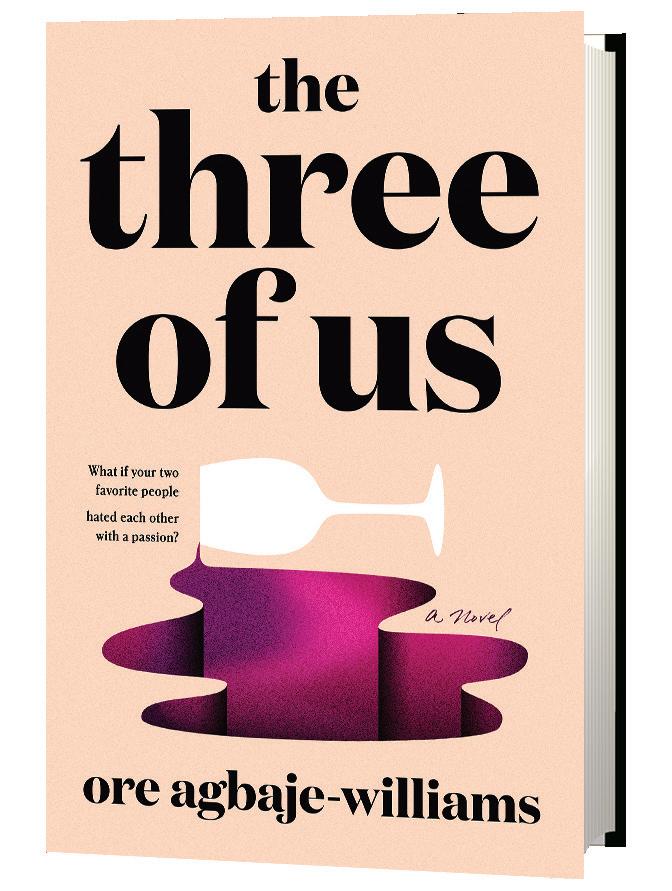
2. The wife, the husband, and Temi all have their version of events. To what extent do you think they believe the stories they tell themselves? In what ways is their resolve to stick to their stories an indication of a strong sense of self?
3. At times, the wife’s allegiance seems to lie with her best friend, Temi. Whom should the wife be more loyal to in this dynamic, and why?
4. Spillage is a recurring motif throughout the story. Other than with wine, what instances of spillage, figurative or literal, can you recall in this story? Discuss its symbolism.
5. At the center of this story lies the idea of motherhood. How does the ending either upend or adhere to the traditional, cultural expectations of family life imposed upon the wife?
6. Based on your answer, discuss the extent to which you perceive the ending as a release toward freedom, or confinement. What do you think was revealed on the last page?
For more discussion questions visit: TinyUrl.com/TheThreeofUsBCK

978-0-593-59810-8 | $28.00/$37.99C | Ballantine Books | HC e 978-0-593-59811-5 | ] DN: 978-0-593-74000-2
] CD: 978-0-593-73998-3 | LP: 978-0-593-74372-0

Spanish-Language Edition: 978-1-6447-3831-3
The bestselling author of A Long Petal of the Sea and Violeta returns with a powerful and moving novel that traces the ripple effects of war and immigration— for fans of Lisa Wingate’s Before We Were Yours and Martha Hall Kelly’s Lilac Girls.
Vienna, 1938. Samuel Adler is five years old when his father disappears during Kristallnacht—the night his family loses everything. As her child’s safety becomes ever harder to guarantee, Samuel’s mother secures a spot for him on a Kindertransport train out of Nazi-occupied Austria to England. He boards alone, carrying nothing but a change of clothes and his violin.
Arizona, 2019. Anita Díaz and her mother board another train, fleeing looming danger in El Salvador and seeking refuge in the United States. But their arrival coincides with the new family separation policy, and seven-year-old Anita finds herself alone at a camp in Nogales. She escapes her tenuous reality through her trips to Azabahar, a magical world of the imagination. Intertwining past and present, The Wind Knows My Name tells the tale of these two unforgettable characters, both in search of family and home. It is both a testament to the sacrifices that parents make and a love letter to the children who survive the most unfathomable dangers—and never stop dreaming.
1. What do you consider are the major themes of The Wind Knows My Name?
2. Readers experience the Night of Broken Glass as it happens to the Adler family. Was there anything that surprised you about this act of terror that you hadn’t known? Please discuss.
3. Music saves Samuel. Why do you think music transcends tragedy and comfort souls?
4. Why do you think Leticia believed in the power of Saint Jude, the patron saint of lost causes, and in Saint Christopher, the patron saint of travelers, despite abandoning the evangelical church?
5. There are two immigrant stories in the novel. How are they similar, and how are they unique?
6. How much did you know about the El Mozote massacre before reading this book? Why do you think this tragedy isn’t widely known in America?
For more discussion questions visit: PenguinRandomHouse.com
978-0-593-53497-7 | $29.00/$39.00C | Knopf | HC e 978-0-593-53498-4 | ] DN: 978-0-593-74058-3 LP: 978-0-593-74418-5
READERS’ ADVISORY: For fans of Kate Atkinson, Ian McEwan, Pat Barker, and Sebastian Faulks.
It is 1940 and twenty-year-old Charlotte Richmond watches from her attic window as enemy planes fly over London. Still grieving her beloved brother, who never returned from France, she is trying to keep herself out of trouble: holding down a typist job at the Ministry of Information, sharing gin and confidences with her best friend, Elena, and dodging her overbearing father.
On her way to work she often sees the boy who feeds the birds—a source of unexpected joy amid the rubble of the Blitz. But every day brings new scenes of devastation, and after yet another heartbreaking loss Charlotte has an uncanny sense of foreboding. Someone is stalking the darkness, targeting her friends. And now he’s following her.
As grief and suspicion consume her, Charlotte’s nerves become increasingly frayed. She no longer knows whom to trust. She can’t even trust herself...
1. What does the novel help us understand about the nature of survival and the uncertainty of what lies ahead? How is Charlotte transformed after the novel’s opening scene, which depicts an ordinary, comfortable day but is followed by waves of unexpected loss?
2. As Charlotte reflects on her time as a schoolgirl, with memories of Vanessa and Elena, what aspects of her true self shine through? As a spirited, resilient young woman, how did she pose a threat to her father, Charles Richmond, MP?
3. As with Jo Baker’s bestseller Longbourn (which delivers a servant’s perspective on the Pride and Prejudice household), money and class propel the storyline in The Midnight News. What does Charlotte gain by having to work for her possessions and sustenance? How does the kindness of Mrs. Callaghan and Mr. Gibbons compare to the luxury of Longwood? What does a college degree signify to Tom, beyond an education?

For more discussion questions visit: PenguinRandomHouse.com


978-0-593-65348-7 | $28.00/$37.99C | Pamela Dorman Books | HC e 978-0-593-65349-4 | ] DN: 978-0-593-74146-7 LP: 978-0-593-74381-2

For fans of Sally Rooney, Miranda Cowley Heller, Rosie Walsh, Rebecca Serle, Emily Henry, Carley Fortune, and Jojo Moyes.
Secret walks and late-night phone calls. An undeniable chemistry. A tragedy that haunts them both. A powerful yet tender love story between two people who can’t help but be pulled back to each other.
This is the story of Will and Rosie. The two are opposites in every way and yet they fall for each other as teenagers; nineties music, sideways glances, sunsets and bonfires and talking late into the night. It’s palpable, inevitable: they’re on the precipice of starting something wonderful. Until one day, tragedy strikes, and any possibility of being together seems to shatter.
But time and again, Rosie and Will find their way back to each other. Though the years pass, they cannot quite let go of what might have been.
Talking at Night tells a story of sudden connections, missed opportunities, the many loves we have over a lifetime—and the one that keeps us coming back, again and again, for more.
1. Talking at Night is about relationships, and the novel delves into the emotional and moral complexities of what we owe ourselves and each other. At any point, did you feel a character made a choice that seemed right in theory, but in practice resulted in nobody feeling satisfied? Were there moments when you had expected—or hoped— a certain character would make a different decision? Explain when and why.
2. Both Rosie and Josh are attracted to Will, and yet when Josh reveals his true feelings to Rosie, she reacts by pushing Will away. Teenagers are notorious for letting emotion get in the way of communication; how could things have worked out differently if they’d been honest with each other?
3. Rosie and Will feel a magnetic pull toward each other throughout the course of the novel, despite geographic distance and intimate relationships with other people. Why do you think they are drawn to each other? Do opposites really attract, or is there something deeper at play here?
For more discussion questions visit: PenguinRandomHouse.com

978-1-66260-139-2 | $26.00/$35.00C | Astra House | HC e 978-1-66260-140-8

READERS’ ADVISORY:
For fans of Elena Ferrante, Lisa Halliday, and Leila Slimani.
“Reading Alba de Céspedes was, for me, like breaking into an unknown universe: social class, feelings, atmosphere.” —Annie Ernaux, Nobel Prize laureate and author of The Years
In this modern translation by acclaimed Elena Ferrante translator Ann Goldstein, Forbidden Notebook centers the inner life of a dissatisfied housewife living in postwar Rome. Valeria Cossati never suspected how unhappy she had become with the shabby gentility of her bourgeois life—until she begins to jot down her thoughts and feelings in a little black book she keeps hidden in a closet. This new secret activity leads her to scrutinize herself and her life more closely, and she soon realizes that her individuality is being stifled by her devotion and sense of duty toward her husband, daughter, and son.
1. The novel opens with Valeria Cossati buying a notebook illegally from a tobacconist. What does this act—and the need to hide the notebook from her immediate family— suddenly reveal to Valeria about her own life?
2. What does the novel reveal about Alba de Céspedes’s opinions on wifehood and motherhood?
3. The male characters in Forbidden Notebook are all struggling with a major life change— Valeria’s father is retired and bored, her husband aspires to be a writer, her son gets his girlfriend pregnant, her boss is falling in love with her, and Mirella’s beau, Cantoni, is divorcing his wife. How do the men handle these challenges? How do they express their concerns and desires? How do their travails affect Valeria and her choices / decisions?
4. The economic hardships of Italians during and after WWII play a key role in this novel —from the laws restricting the sale of paper goods to housewives like Valeria having to work outside the home. How do these financial constraints affect Valeria’s marriage? How do they affect her perception of her boss’s advances and of Mirella’s relationship with the well-off Cantoni?
For more discussion questions visit: TinyUrl.com/ForbiddenNotebookBCKit
978-0-593-23991-9 | $28.00/$37.99C | Crown | HC e 978-0-593-23992-6 | ] DN: 978-0-593-66807-8
LP: 978-0-593-67854-1
The Pulitzer Prize–winning author of Evicted reimagines the debate on poverty, making a “provocative and compelling” (NPR) argument about why it persists in America: because the rest of us benefit from it. For fans of Caste by Isabel Wilkerson and On Tyranny by Timothy Snyder.
In this landmark book, acclaimed sociologist Matthew Desmond draws on history, research, and original reporting to show how affluent Americans knowingly and unknowingly keep poor people poor. Those of us who are financially secure exploit the poor, driving down their wages while forcing them to overpay for housing and access to cash and credit. We prioritize the subsidization of our wealth over the alleviation of poverty, designing a welfare state that gives the most to those who need the least. And we stockpile opportunity in exclusive communities, creating zones of concentrated riches alongside those of concentrated despair. Some lives are made small so that others may grow.

Elegantly written and fiercely argued, this compassionate book gives us new ways of thinking about a morally urgent problem.
1. What was your experience reading Poverty, by America? What three words describe that experience, and why?
2. Desmond defines poverty as “a tight knot of social problems,” breaking with conventional definitions that focus only on low incomes. What are the implications of this view? How would you define poverty?
3. “We’ve been trained to see the poor as idle and unmotivated since the earliest days of capitalism,” says Desmond. He also writes that “these old tropes and stereotypes are dying.” When have you experienced these tropes and stereotypes? Do you think their power is in fact waning?
4. “To understand the causes of poverty, we must look beyond the poor,” notes Desmond from the outset, “which makes this a book about poverty that is not just about the poor. Instead, it’s a book about how the other half lives, about how some lives are made small so that others may grow.” How does this focus deepen the author’s arguments and proposed solutions?
For more discussion questions visit: TinyUrl.com/PovertybyAmericaDG

978-0-593-44031-5 | $17.00/$23.00C | Berkley | TR e 978-0-593-44032-2 | ] DN: 978-0-593-68422-1

READERS’ ADVISORY: Inspired by a remarkable true story, a young teacher evacuates children to safety across perilous waters, in a moving and triumphant new novel for fans of Lisa Wingate, Kristin Hannah, and Martha Hall Kelly.
1940, Kent: Alice King is not brave or daring—she’s happiest finding adventure through the safe pages of books. But times of war demand courage. Determined to do her part, she finds a role perfectly suited to her experience as a schoolteacher—to help evacuate Britain’s children overseas.
1940, London: With two lively children and a loving husband, Lily’s humble home is her world, until war tears everything asunder. With her husband gone and bombs raining down, Lily is faced with an impossible choice: keep her son and daughter close or enroll them in a risky evacuation scheme.
When a Nazi U-boat torpedoes the S.S. Carlisle carrying a ship of children to Canada, a single lifeboat is left adrift in the storm-tossed Atlantic. Alice and Lily, strangers to each other, will quickly become one another’s very best hope as their lives are fatefully entwined.

1. The novel moves between the experiences of two very different women faced with lifechanging decisions. Whose narrative arc did you relate to most—Alice or Lily—and why?
2. How did you feel when you read the scenes that took place in the lifeboat? Who were you rooting for and why?
3. In what ways has The Last Lifeboat made you think about World War II differently?
4. We often wonder what we would do if faced with a life-or-death situation. Did the actions of any of the characters in the lifeboat surprise you?
5. Mass-Observation was established for ordinary British civilians to record their thoughts and experiences of war. Had you heard about Mass-Observation before reading The Last Lifeboat?
6. What were your feelings upon finishing the book? Did the ending surprise you? Would you change the ending for any of the characters?
For more discussion questions visit: TinyUrl.com/TheLastLifeboatBCK


978-0-593-49207-9 | $28.00/$37.99C | Viking | HC e 978-0-593-49208-6 | ] DN: 978-0-593-67075-0
By the award-winning author of Something Wild, comes a gripping portrait of a tumultuous, consuming relationship between a young woman and a recovering addict for readers of Cherry by Nico Walker and Long Bright River by Liz Moore.
When Leah Kempler meets Charlie Nelson in line at the grocery store, their attraction is immediate and intense. Charlie, with his big feelings and grand proclamations of love, captivates her completely. But there are peculiarities of his life. He confesses that he’s a recovering heroin addict, but he promises Leah that he’s never going to use again.
Leah’s friends and family are concerned. As she finds herself getting deeper into an isolated relationship, one of manipulation and denial, the truth about Charlie feels as blurry as their time together. Even when Charlie’s behavior becomes increasingly erratic, when he starts to make Leah feel unsafe, she can’t help but feel that what exists between them is destined. The bounds of Leah’s own pain—and love—are so deep that she can’t see him spiraling into self-destruction.
1. Leah is so deep in her relationship with Charlie that she is in denial when he begins to relapse. What was your experience reading this part of the novel? Was it clear to you that Charlie was in trouble, or were you, as a reader, so entrenched in Leah’s perspective that you believed him, too?
2. Did you think Leah was a reliable narrator? Did you ever question the objectivity of her perspective? When and why?
3. The novel orbits around Leah and Charlie’s consuming, destructive relationship. How do you define toxic relationships? Why do you think someone might stay in a toxic relationship?
4. Addiction is examined in several ways in the novel. Beyond drug addiction, what other kinds of compulsions do the characters have? What role do these other forms of compulsion play, and how do they affect the way power and control are exerted in the novel?
5. How did the depiction of heroin addiction in the novel compare to your understanding of the problem from the news or from your personal life?
For more discussion questions visit: PenguinRandomHouse.com
978-1-64129-359-4 | $27.95/$36.95C | Soho Crime | HC e 978-1-64129-360-0
For fans of Jacqueline Winspear, Steph Cha, and Sujata Massey, and for readers of the Mary Higgins Clark Award–winning Clark and Division.
It’s been two years since Aki Ito and her family were released from Manzanar detention center and resettled in Chicago with other Japanese Americans. Now the Itos have finally been allowed to return home to California—but nothing is as they left it. The entire Japanese American community is starting from scratch, with thousands of people living in dismal refugee camps while they struggle to find new houses and jobs in over-crowded Los Angeles.
Aki is working as a nurse’s aide at the Japanese Hospital in Boyle Heights when an elderly Issei man is admitted with suspicious injuries. When she seeks out his son, she is shocked to recognize her husband’s best friend, Babe Watanabe. Could Babe be guilty of elder abuse? Only a few days later, Little Tokyo is rocked by a murder at the low-income hotel where the Watanabes have been staying. When the cops start sniffing around Aki’s home, she begins to worry that the violence tearing through her community might threaten her family. What secrets have the Watanabes been hiding, and can Aki protect her husband from getting tangled up in a murder investigation?
1. Aki takes a lot of risks in this book to figure out who killed Mr. Watanabe. Why do you think she pursues this specific case with such determination? Would you have done the same if you were in her shoes, or do you think she was acting recklessly?

2. How do grief and trauma (both collective and personal) affect Aki as she settles back into her new life in California? What about Art?
3. Do you see any parallels between how AAPI people are treated in America today and how they were treated in the years following WWII? How so?
4. From Willie Mae to Babe to Mr. Watanabe, Aki is forced to rethink some of her preconceived notions about people. Which character arcs in the book were you surprised by?
For more discussion questions visit: TinyUrl.com/EvergreenQuestions


978-0-593-47292-7 | $27.00/$37.00C | Dutton | HC e 978-0-593-47293-4 | ] DN: 978-0-593-67137-5


In this sly, surprising, and razor-sharp debut novel, a virtuoso pianist gives up her future as a musician to work at a high-end wellness store in New York City where the pursuit of beauty comes at a staggering cost. For readers of Nightbitch and No One Is Talking About This.
Our narrator is the youngest student at the Conservatory. But when an accident leaves her parents debilitated, she abandons her future as a pianist and accepts a job at Holistik—a high-end beauty and wellness store in New York City. Our narrator’s new job is a coveted one among New York’s beauty-obsessed, and it affords her entry into a new world of privilege. She becomes transfixed by Helen—a model, and the niece of Holistik’s charismatic owner—and the two strike up a close friendship that hazily veers into more. All the while, Holistik plies our narrator with products that slim her thighs, smooth her skin, lighten her hair, and change her eye color. But beneath these fancy creams and tinctures lies a terrible truth that threatens to consume her. After all, beauty is nothing without ugliness.
1. The narrator faces classism and racism during her time at the Conservatory. How do her experiences there compare and contrast to her job at Holistik?
2. The narrator says to Helen: “Beauty has always been one of the only ways women have been able to access power and I can’t fault any of them for wanting more of it.” How do you feel about this?
3. How does the narrator’s understanding of her sexuality develop over the course of the novel? How do you think she understands it at the end of the book?
4. When the narrator first starts at Holistik, she believes she may be a “diversity hire.” Later, she learns many of the other staff are also women of color, despite their appearances. How does the narrator’s understanding of race, culture, and identity change over the novel?

5. Victor and his staff claim that using nature—both organic products and live animals— makes their products inherently more moral. How have you seen this occur in real life and what do you think about it?
6. “I am the throat by which my parents are sung and sustained.” Discuss the narrator’s relationship with her parents.
For more discussion questions visit: TinyUrl.com/NaturalBeautyDiscussionQ


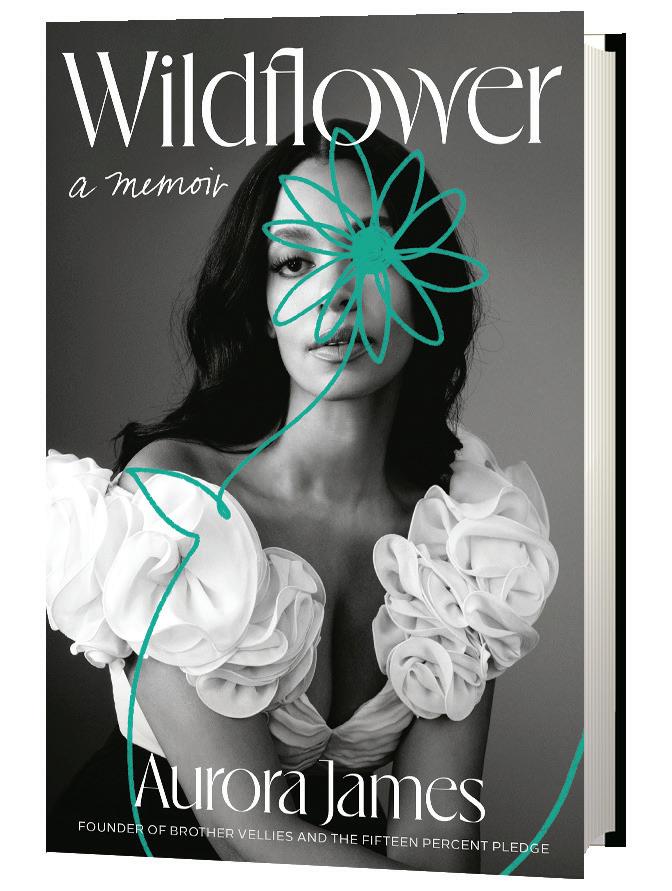
978-0-593-23945-2 | $28.00/$37.00C | Crown | HC e 978-0-593-23946-9 | ] DN: 978-0-593-67859-6
READERS’ ADVISORY:
This extraordinary memoir of struggle and perseverance offers new ways of envisioning economic equality for everyone—from a leading activist and fashion pioneer. For fans of Shonda Rhimes’s Year of Yes and Luvvie Jones’s Professional Troublemaker.
Aurora James’s life is a great American “success story”—precisely because it looks so different from others we’ve seen. Born in Canada to a counterculture mother, James was raised to question everything—specifically the very institutions that have shaped so many of us. Scouted as a model in eighth grade, James struggled with body image and became disenchanted by the industry’s objectification of women and commodification of race and culture.
A slew of fashion-related jobs led James to discover the real power in creating for the runway, and she started her own business in a flea market: a sustainable fashion line showcasing traditional African designs that would become an award-winning international brand. But none of this came from a drive to “succeed.” It came from a desire to forge a new creative path—and to lift others up alongside her.
1. Early in Aurora James’s life, her mother comes across as a fiery, independent woman. But when Winston enters the picture, that all seems to change. How does this affect James’s upbringing and her relationship with her mother?
2. Talk about James’s teenage rebellious streak—including its consequences. Why do you think she acted out, and why was it so pivotal to who she’s ultimately become?
3. What were the inequities James saw in modeling? How do they inform the work she does today?

4. James observes that “hurt people hurt people” when examining her own relationship with her mother and the abuse inflicted by her stepfather. How can understanding the origins of generational trauma help heal us?
5. How do James’s values align with her talents? What about her passion inspires you?
For more discussion questions visit: TinyUrl.com/WildflowerDiscussionQuestions

978-1-4967-4291-9 | $16.95/$22.99C
A John Scognamiglio Book | TRFor readers who enjoy the moody gothic allure of Kate Morton and Silvia Moreno-Garcia or the immersive settings of Lucinda Riley and Fiona Davis.
Rome, 1965: Aspiring actress Silvia Whitford arrives at Rome’s famed Cinecittà Studios from Los Angeles, ready for her big break and a taste of la dolce vita. Instead, she learns that the movie in which she was cast has been canceled. Desperate for money, Silvia has only one choice: seek out the Italian aunt she has never met.
Gabriella Conti lives in a crumbling castello on the edge of a volcanic lake. Silvia’s mother refuses to explain the rift that drove the sisters apart, but Silvia is fascinated by Gabriella, a once-famous actress who still radiates charisma. And the eerie castle inspires Silvia’s second chance when it becomes the location for a new horror movie, aptly named The Revenge of the Lake Witch—and she lands a starring role.
Silvia immerses herself in the part of an ingenue tormented by the ghost of her beautiful, seductive ancestor. But when Gabriella abruptly vanishes, the movie’s make-believe terrors seep into reality. No one else on set seems to share Silvia’s suspicions. Yet as she delves into Gabriella’s disappearance, she triggers a chain of events that illuminate dark secrets in the past—and a growing menace in the present.
1. Gabriella became an actress because she wanted to be famous, while Silvia pursues acting as a means to support her family. How do you think their different motivations impacted the directions their careers took? Did you notice any other major differences or parallels between these characters?
2. Did the political polarization Silvia observed in Italy feel relatable to you? How did politics impact Silvia’s family? How do they impact your own?
For more discussion questions visit: TinyUrl.com/CastelloQuestions



978-0-593-53597-4 | $28.00/$37.99C | Knopf | HC e 978-0-593-53598-1 | ] DN: 978-0-593-74182-5
For fans of Jhumpa Lahiri, Zadie Smith, Yaa Gyasi, and Megha Majumdar.
Abbas is just seventeen years old when his gifts as a woodcarver come to the attention of Tipu Sultan, and he is drawn into service at the palace in order to build a giant tiger automaton for Tipu’s sons, a gift to commemorate their return from British captivity. His fate—and the fate of the wooden tiger he helps create—will mirror the vicissitudes of nations and dynasties ravaged by war across India and Europe.
Working alongside the legendary French clockmaker Lucien du Leze, Abbas hones his craft, learns French, and meets Jehanne, the daughter of a French expatriate. When Du Leze is finally permitted to return home to Rouen, he invites Abbas to come along as his apprentice. But by the time Abbas travels to Europe, Tipu’s palace has been looted by British forces, and the tiger automaton has disappeared. To prove himself, Abbas must retrieve the tiger from an estate in the English countryside, where it is displayed in a collection of plundered art.
1. What are the different factors that go into social class/caste in Mysore at the time we meet the characters? How are these boundaries enforced (and broken) within the different communities of Indians and Europeans?
2. Discuss how Abbas’s creativity is nurtured and stifled by different people throughout his life. As a child, it’s said that “his mind glitters with ideas, yet he has no idea of how much luck he will need”—what kind of “luck” does he receive, and what kind does he miss out on?
3. Why do you think the book is named after the card game that Jehanne and Lady Selwyn play? What forms of “loot” are there in the novel, who owns them, and what is their relative worth?
4. What makes the Musical Tiger so special to Tipu, Du Leze, Abbas, Jehanne, and Lady Selwyn? Does this example of politicized art bring people together or separate them—or both?
For more discussion questions visit: PenguinRandomHouse.com

978-0-385-54869-4 | $27.00 | Doubleday | HC e 978-0-385-54870-0 | ] DN: 978-0-593-62815-7

For readers of Stephen Graham Jones, Silvia Moreno-Garcia, and Victor LaValle.


When Mackenzie wakes up with a severed crow’s head in her hands, she panics. Only moments earlier she had been fending off masses of birds in a snow-covered forest. In bed, when she blinks, the head disappears.
Night after night, Mackenzie’s dreams return her to a memory from before her sister Sabrina’s untimely death: a weekend at the family’s lakefront campsite, long obscured by a fog of guilt. But when the waking world starts closing in, too—a murder of crows stalks her every move around the city, she wakes up from a dream of drowning throwing up water, and gets threatening text messages from someone claiming to be Sabrina—Mackenzie knows this is more than she can handle alone.
Traveling north to her rural hometown in Alberta, she finds her family still steeped in the same grief that she ran away to Vancouver to escape. They welcome her back, but their shaky reunion only seems to intensify her dreams—and make them more dangerous. What really happened that night at the lake, and what did it have to do with Sabrina’s death? Only a bad Cree would put their family at risk, but what if whatever has been calling Mackenzie home was already inside?
1. How does the book’s title, Bad Cree, work in relation to its contents? If you could give the book a new title, what would it be?


2. Grief and loss are significant themes in Bad Cree. In what ways do the characters experience grief and how does that show up in the novel? Do you think this is an accurate portrayal of the different ways of dealing with loss?
3. Crows appear consistently throughout Bad Cree, so much so they are essentially their own characters. How do the appearance of the crows inform the mood of the novel? Does the mood they create when they appear change as the novel progresses?
For more discussion questions visit: PenguinRandomHouse.com


978-0-345-53184-1 | $28.99/$38.99C | Bantam | HC e 978-0-345-53185-8


From the bestselling author of Defending Jacob comes a character-driven story of psychological suspense for fans of The Last Thing He Told Me by Laura Dave and The Dry by Jane Harper.
One afternoon in November 1975, ten-year-old Miranda Larkin comes home from school to find her house eerily quiet. Her mother is missing. Nothing else is out of place. There is no sign of struggle. Her mom’s pocketbook remains in the front hall, in its usual spot. So begins a mystery that will span a lifetime. What happened to Jane Larkin?
Investigators suspect Jane’s husband. A criminal defense attorney, Dan Larkin would surely be an expert in outfoxing the police. But no evidence is found linking him to a crime, and the case fades from the public’s memory, a simmering, unresolved riddle. Jane’s three children—Alex, Jeff, and Miranda—are left to be raised by the man who may have murdered their mother.
Two decades later, the remains of Jane Larkin are found. The investigation is awakened. The children, now grown, are forced to choose sides. With their father or against him? Guilty or innocent? And what happens if they are wrong?
1. All That Is Mine I Carry With Me explores a number of thought-provoking themes, including family, loyalty, grief, secrets, and the fragility of relationships. Which theme resonated the most deeply with you and why?

2. Aside from being the translation of the Latin text in Miranda’s tattoo, what do you think the title of the novel means?
3. Each part of the novel is told from a different character’s point of view. How did that deepen the story? Did any section particularly stand out for you? If so, why?
4. What message was Kate trying to convey with the Bible verse she had the priest read at Jane’s burial ceremony?
For more discussion questions visit: TinyUrl.com/AllThatIsMineBCKit

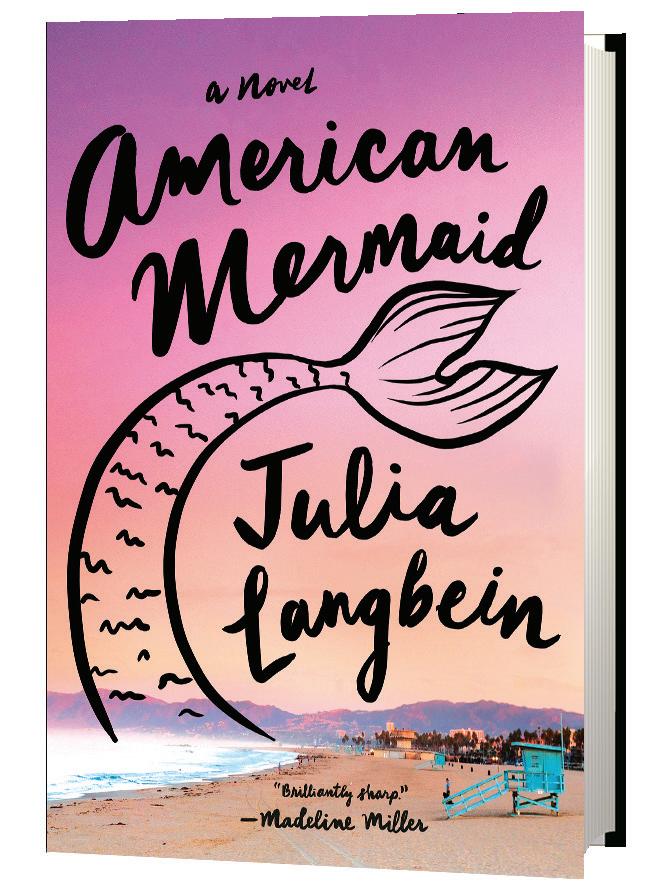
978-0-385-54967-7 | $28.00/$37.99C | Doubleday | HC e 978-0-385-54968-4 | ] DN: 978-0-593-67047-7
For readers of My Year of Rest and Relaxation by Ottessa Moshfegh, Great Circle by Maggie Shipstead, and Nothing to See Here by Kevin Wilson.
Broke English teacher Penelope Schleeman is as surprised as anyone when her feminist novel American Mermaid becomes a bestseller. Lured by the promise of a big payday, she quits teaching and moves to L.A. to turn the novel into an action flick with the help of some studio hacks. But as she’s pressured to change her main character from a fierce, androgynous eco-warrior to a teen sex object in a clamshell bra, strange things start to happen. Threats appear in the screenplay; siren calls lure Penelope’s co-writers into danger. Is Penelope losing her mind, or has her mermaid come to life, enacting revenge for Hollywood’s violations?
A hilarious story about deep things, American Mermaid asks how far we’ll go to protect the parts of ourselves that are not for sale.
1. Mermaid stories have been around forever. How does this book both fit into and turn the typical mermaid trope on its head?
2. Discuss the novel within the novel. How do you think it would work as a stand-alone piece? How does it serve the larger novel as a literary device?
3. What does it mean to you to sell out? Is it possible to maintain a balance between monetary concerns and the desire to remain authentic?
4. How does the contemporary climate crisis shape Penelope’s world versus Sylvia’s world? Does its appearance in fiction change the way you think about the climate crisis or the ways you might fight it?
5. Sylvia thinks her legs are useless until she discovers the secret of her origins. Have you ever had anything that you thought was a limitation that ended up being a superpower?
For more discussion questions visit: PenguinRandomHouse.com


978-0-525-51208-0 | $27.00/$37.00C | One World | HC e 978-0-525-51209-7 | ] DN: 978-0-593-61106-7

READERS’ ADVISORY: A new vision of the American West, from the award-winning author of The Changeling—for readers of Colson Whitehead, Stephen Graham Jones, Silvia Moreno-Garcia, Joe Hill, and Grady Hendrix.

Adelaide Henry carries an enormous steamer trunk with her wherever she goes. It’s locked at all times. Because when the trunk opens, people around Adelaide start to disappear.
The year is 1915, and Adelaide is in trouble. Her secret sin killed her parents, forcing her to flee California in a hellfire rush and make her way to Montana as a homesteader. Dragging the trunk with her at every stop, she will become one of the “lone women” taking advantage of the government’s offer of free land for those who can tame it—except that Adelaide isn’t alone. And the secret she’s tried so desperately to lock away might be the only thing that will help her survive the harsh territory.
Crafted by a modern master of magical suspense, Lone Women blends shimmering prose, an unforgettable cast of adventurers who find horror and sisterhood in a brutal landscape, and a portrait of early-twentieth-century America like you’ve never seen. And at its heart is the gripping story of a woman desperate to bury her past—or redeem it.
1. Lone Women features fantastical, mystical elements that are counterbalanced by the most ordinary aspects of real, daily life. Discuss where the author finds the appropriate balance between fantasy and reality in this book to make it both accessible and believable.
2. The story takes place during early twentieth century America—the mining boom is over and abandoned ghost towns litter the landscape. How do you think this historical backdrop affects the behavior of the characters?
3. How are the themes of Lone Women relevant to modern discussions of race, privilege, and power?
4. How does the magical realism employed in Lone Women relate to recent pop culture representations of Black horror, such as Get Out or Us?
For more discussion questions visit: TinyUrl.com/LoneWomenBCKit

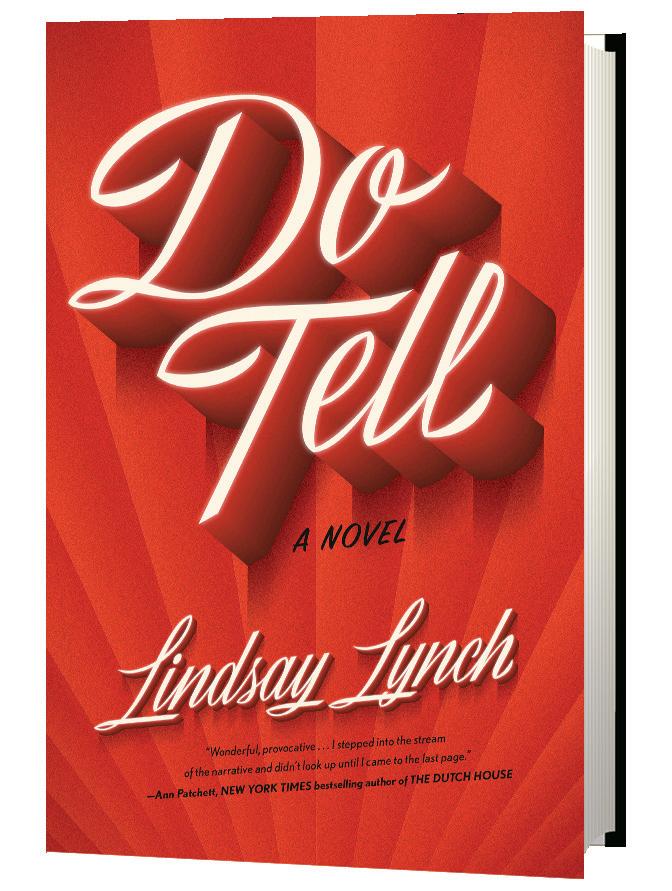
978-0-385-54937-0 | $28.00/$37.99C | Doubleday | HC e 978-0-385-54938-7 | ] DN: 978-0-593-74062-0 LP: 978-0-593-74424-6
For readers of Taylor Jenkins Reid and Adriana Trigiani.
As character actress Edie O’Dare finishes the final year of her contract with FWM Studios, the clock is ticking for her to find a new gig after an undistinguished stint in the pictures. She’s long supplemented her income moonlighting for Hollywood’s reigning gossip columnist, providing her with the salacious details of every party and premiere. When an up-and-coming starlet hands her a letter alleging an assault from an A-list actor at a party with Edie and the rest of the industry’s biggest names in attendance, Edie helps get the story into print and sets off a chain of events that will alter the trajectories of everyone involved. Now on a new side of the entertainment business, Edie’s second-act career grants her more control on the page than she ever commanded in front of the camera. But Edie quickly learns that publishing the secrets of those former colleagues she considers friends has repercussions. And when she finds herself in the middle of the trial of the decade, Edie is forced to make an impossible choice with the potential to ruin more than one life.
1. What was your impression of the golden age of Hollywood before reading Do Tell? How did the novel change the way you thought about the studio system and the actors, directors, publicists, and writers that made up its ecosystem? What did you get right?
2. Edie says she built her career by focusing on “the things actors won’t say.” What do you think is the most valuable secret she picks up on over the course of the novel? How does covert observation play into your life, relationships, and work?
3. Characters in Do Tell go unpunished. How did that make you feel? Were there elements of the conclusion that surprised you? In a perfect world, how would you see justice served?
4. Though Do Tell is historical fiction, Sophie’s trial and its outcome feel timely given recent news events and social movements. How do you think Sophie’s allegations might have been received had she gone to trial today?
For more discussion questions visit: PenguinRandomHouse.com


978-1-63910-282-2

Perfect
American consultant Kat is staffed on a six-month project in London and has two very small, very reasonable ambitions before returning home: get promoted to partner and fall in love with a handsome English aristocrat. No problem, right?
But work is a grind, and the British men she meets are a far cry from her royal ideal. Then one morning, she sees a man on a double-decker bus and just knows that he’s her person. But when Kat finally musters the courage to board the bus and introduce herself, he turns out to be very different from the Prince Charming she expected.
Can Kat open herself up to a love that’s not like the movies, or is she too imprisoned by her rom-com expectations?
1. Double-Decker Dreams uses the idea of “love at first sight” in a fresh, fun way. How did the use of this romance trope move the story along?
2. London is the main setting for Double-Decker Dreams. Did you enjoy “visiting” the city? What role did you feel the setting played for the characters and you as a reader?
3. Kat has many romantic expectations based on media depictions of romance (books, movies, TV shows, etc.). How did those expectations limit or hinder her real-life experiences? How did they elevate her real-life experiences? Do you feel, as a reader, that you also have expectations in life based on books and movies?
4. Why do you think Kat was so disappointed when she found out that her “Prince Charming” was not, in fact, the handsome English aristocrat she thought him to be? Have you ever experienced this kind of disappointment when things don’t quite work out how you expect? How did you cope with that?
For more discussion questions visit: TinyUrl.com/BookClubDblDecker
978-0-593-30069-5 | $28.00/$37.99C | Penguin Press | HC e 978-0-593-30070-1 | ] DN: 978-0-593-67129-0
From the National Book Award–longlisted author of The Portable Veblen for readers of Karen Joy Fowler, Andrew Sean Greer, and Patrick DeWitt.


Penny Rush has problems. Her marriage is over; she’s quit her job. Her mother and stepfather went missing in the Australian outback five years ago; her mentally unbalanced father provokes her; her grandmother Dr. Pincer keeps experiments in the refrigerator. But Penny is a virtuoso at what’s possible when all else fails.
There will be a road trip in The Dog of the North, an old van with gingham curtains. There will be injury and peril. There will be a dog named Kweecoats and two brothers who may share a toupee. There will be questions: Why is a detective investigating her grandmother, and what is “the scintillator”? And can Penny recognize a good thing when it finally comes her way?
1. Why do you think the book is titled after Burt’s van? What does this suggest about the significance of his and Penny’s relationship amongst all the other people she spends time within the book?
2. Penny’s narration often pairs more serious moments with deadpan or absurdist humor. How did that affect your own emotional response to those scenes? What does it suggest about Penny’s personality or coping mechanisms for difficult emotions—or, perhaps, the nature of life itself?
3. How does Penny’s introduction to Kweecoats—his fur on the sleeping bag—manifest in the rest of their time together, as well as how other people show up in her life (through what they leave behind)?
4. What were some of the more surprising aspects of Penny’s story in your opinion? How did they affect your ability to relate to her circumstances?
5. Penny reflects about the minimart clerk, who gives her a free soda after Burt’s episode in the store: “It was uncanny how a stranger might know what you needed better than you did yourself.” How is it particularly relevant to Penny?
For more discussion questions visit: TinyUrl.com/TheDogOfTheNorthBCKit

978-1-64009-583-0 | $27.00/$35.00C | Counterpoint | HC e 978-1-64009-584-7

For fans of Cristina García, Joan Silber, Amor Towles, and Viet Thanh Nguyen.
The Helena is an art deco apartment building that has witnessed the changing face of South Miami Beach for seventy years, observing the lives housed within. Among those who have called apartment 2B home are a Cuban concert pianist who performs in a nursing home; the widow of an intelligence officer raising her young daughter alone; a man waiting on a green card marriage to run its course so that he can divorce his wife and marry his lover, all of whom live together; a Tajik building manager with a secret identity; and a troubled young refugee named Lenin. Each tenant imbues 2B with energy that will either heal or overwhelm its latest resident, Lana, a mysterious woman struggling with her own past.
Examining exile, homesickness, and displacement, The Apartment asks what—in our violent and lonely century—do we owe one another? If alone we are powerless before sorrow and isolation, it is through community and the sharing of our stories that we may survive and persevere.
1. The book is told by a series of characters who live in the same apartment over time. Why do you think the author chose to tell the story this way? What do you think makes it a novel rather than a set of stories?
2. Settings can often act as characters in novels, and The Helena is no exception. How would you describe The Helena’s presence in the novel? Does it change over the course of the narrative? If so, how?
3. Did one of the characters speak to you the most? Who would you choose to star in their own novel and why?
For more discussion questions visit: TinyUrl.com/ApartmentBookQuestions


978-0-593-24373-2 | $28.00/$37.99C | The Dial Press | HC e 978-0-593-24374-9 | ] DN: 978-0-593-66405-6 LP: 978-0-593-68293-7


From the author of Dear Edward, comes an engrossing family story for readers of Celeste Ng’s Little Fires Everywhere, Ann Patchett’s Commonwealth, and Mary Beth Keane’s Ask Again, Yes, and shows like This is Us and Parenthood.
William Waters grew up in a house silenced by tragedy, where his parents could hardly bear to look at him, much less love him—so when he meets the spirited and ambitious Julia Padavano in his freshman year of college, it’s as if the world has lit up around him. With Julia comes her family, as she and her three sisters are inseparable. With the Padavanos, William experiences a newfound contentment; every moment in their house is filled with loving chaos. But then darkness from William’s past surfaces, jeopardizing not only Julia’s carefully orchestrated plans for their future, but the sisters’ unshakeable devotion to one another. The result is a catastrophic family rift that changes their lives for generations. Will the loyalty that once rooted them be strong enough to draw them back together when it matters most?
An exquisite homage to Louisa May Alcott’s timeless classic, Little Women, Hello Beautiful is a profoundly moving portrait of what is possible when we choose to love someone not in spite of who they are, but because of it.
1. Discuss the rift that occurs between William, Julia, and Sylvie, and the choices each character makes to contribute to that rift. If you were involved in a similar situation, what might you have done?
2. Discuss how mental health plays a role in the story of Hello Beautiful. Did William’s depressive experience feel “real” to you, for example? What about his parents’?
3. Sylvie imagined her life to be full of “third doors,” or unexpected ways of living that allow her to choose her own path. What third doors can you see in your own life?
4. There are three mothers in Hello Beautiful: Rose, Julia, and Cecelia. Compare each of their parenting styles and decisions. Do you relate to one of them more than the others? Why or why not? What does a “good” mother look like in this novel?
For more discussion questions visit: TinyUrl.com/HelloBeautifulBCKit


978-0-593-44274-6 | $28.00/$37.99C | Crown | HC e 978-0-593-44275-3 | ] DN: 978-0-593-74085-9 LP: 978-0-593-74390-4
The #1 New York Times bestselling author of The Happiness Project discovers a surprising path to a life of more energy, creativity, luck, and love: by tuning in to the five senses.
For more than a decade, Gretchen Rubin had been studying happiness and human nature. Then, one day, a visit to her eye doctor made her realize that she’d been overlooking a key element of happiness: her five senses. She’d spent so much time stuck in her head that she’d allowed the vital sensations of life to slip away, unnoticed. This epiphany lifted her from a state of foggy preoccupation into a world rediscovered by seeing, hearing, smelling, tasting, and touching.
In this journey of self-experimentation, Rubin explores the mysteries and joys of the five senses as a path to a happier, more mindful life. Drawing on cutting-edge science, philosophy, literature, and her own efforts to practice what she learns, she investigates the profound power of tuning in to the physical world.
1. Gretchen Rubin begins Life in Five Senses by admitting, “I felt stuck in my head— disconnected from the world and other people, and also from myself.” Have you ever experienced this feeling of disconnection?

2. Have you ever experienced a “lightning bolt” moment like Gretchen Rubin’s visit to the eye doctor? Did you make any changes in your life as a result?
3. Did Life in Five Senses make you more aware of your own foreground and background senses? Did it inspire you to do more to cultivate your senses? To engage more deeply with the neglected ones?
4. In your family, what senses are discussed or emphasized most? How did your upbringing shape your current relationship to the senses?
5. Life in Five Senses is packed with quotations. Which ones resonated with you?
For more discussion questions visit: TinyUrl.com/LifeinFiveSensesDG



978-0-593-29861-9 | $28.00/$37.99C | Viking | HC e 978-0-593-29862-6 | ] DN: 978-0-593-74227-3
For readers of Abi Daré’s The Girl with the Louding Voice, the novels of Elif Batuman, Imbolo Mbue’s How Beautiful We Were, and Yaa Gyasi’s Homegoing.
Wisecracking and inquisitive, Selam Asmelash is the youngest in her large, boisterous family. Even before she is born, she has a bewitching omniscience that animates life in her Small Town in southwestern Ethiopia in the 1980s. Selam and her father listen to the radio in secret as the socialist military junta seizes properties and wages civil war in the North. The Asmelashes, once an enterprising, land-owning family, are ostracized under the new regime. Selam grows up seeking revenge on despotic comrades, neighborhood bullies, and a ruthless God. Wise beyond her years yet naive, she contends with an inner fury, a profound sadness, and an unstoppable pursuit of education, freedom, and love.
1. Do you think Selam is a “difficult child”? Why or why not? What makes someone “difficult,” and how might the culture and environment in which you are born determine this?
2. Why do you think nearly the entire book is told in Selam’s voice? What perspective does a child narrator give the story, and what might be missing from that viewpoint?
3. One day the Asmelashes are landowners, the next they’ve lost nearly everything and are ostracized by their community. For many residents of the Small Town, moral authority is determined by the governing regime. What do you think grounds the Asmelash’s value system—politics, religion, family history, national identity, or something else? What about in your own life?
4. Discuss some of the ideas about justice that come up in the novel. Do you think the novel ultimately reaches a conclusion about how to handle crime and punishment?
5. How does Selam’s relationship with her father develop over the course of the novel? Did your feelings about Asmelash change?
For more discussion questions visit: PenguinRandomHouse.com

978-0-399-59094-8 | $28.00/$37.99C | Random House | HC e 978-0-399-59095-5 | ] DN: 978-0-525-52788-6
] CD: 978-0-525-52785-5 | LP: 978-0-593-74593-9

READERS’ ADVISORY:

A comedy writer thinks she’s sworn off love, until a dreamy pop star flips the script on all her assumptions—from the author of Eligible, Rodham, and Prep. Perfect for fans of This Time Tomorrow, Carrie Soto Is Back, Book Lovers, Nora Goes Off Script, and Meant to Be.
Sally Milz is a sketch writer for The Night Owls, a late-night live comedy show that airs every Saturday. With a couple of heartbreaks under her belt, she’s long abandoned the search for love, settling instead for the occasional hook-up, career success, and a close relationship with her stepfather to round out a satisfying life.
But when Sally’s friend and fellow writer Danny Horst begins dating a glamorous actress who guest-hosted the show, he joins the not-so-exclusive group of talented but averagelooking men who’ve gotten romantically involved with incredibly beautiful and accomplished women. Sally channels her annoyance into a sketch called the Danny Horst Rule, poking fun at this phenomenon while underscoring how unlikely it is that the reverse would ever happen for a woman.
Enter Noah Brewster, a pop music sensation who is both host and musical guest for this week’s show. Sally hits it off with Noah instantly, and she begins to wonder if there might actually be sparks flying. But this isn’t a romantic comedy—it’s real life. And in real life, someone like him would never date someone like her . . . right?
1. Where have you seen the Danny Horst Rule play out in real life? What’s your opinion of it? Have you seen the reverse happen?
2. Sally learns from her mother that we all have public and private selves. How would you describe Sally’s selves? How would you describe Noah’s? When do you think they switch from using their public to private selves with each other?
3. How would you characterize Sally’s relationship with The Night Owls? Why do you think it’s so hard for her to conceive of leaving?
4. Sally is both extremely confident and extremely insecure. How do you think these facts can both be true?
For more discussion questions visit: TinyUrl.com/RomanticComedyBCKit

978-0-593-33233-7 | $28.00/$37.99C | Riverhead Books | HC e 978-0-593-33235-1 | ] DN: 978-0-593-67181-8

LP: 978-0-593-67669-1
The author of the Booker Prize finalist Real Life and Filthy Animals returns with a deeply involving new novel of young men and women at a crossroads for fans of Sally Rooney, Garth Greenwell, and Katie Kitamuro.
In the shared and private spaces of Iowa City, a loose circle of lovers and friends encounter, confront, and provoke one another in a volatile year of self-discovery. At the group’s center are Ivan, a dancer turned aspiring banker who dabbles in amateur pornography; Fatima, whose independence and work ethic complicates her relationships with friends and a trusted mentor; and Noah, who “didn’t seek sex out so much as it came up to him like an anxious dog in need of affection.” Finally, as each prepares for an uncertain future, the group heads to a cabin to bid goodbye to their former lives—a moment of reckoning that leaves each of them irrevocably altered.
1. Money and class are central concerns in the lives of many of the characters in The Late Americans, among them the couples Fyodor and Timo, and Goran and Ivan. How does class affect the power dynamics and misunderstandings within these couples?
2. What role do the arts—dance, music, and poetry—play in each character’s sense of self and how do they shape their future dreams? How does Olafur’s proclamation that “you aren’t an artist if you don’t have empathy, passion, and pain” play out for each of the characters? How do they use art to express and explore their emotions? How do they reckon with their level of talent and ability?
3. How do Seamus’s ideas about poetry differ from his classmates’? Do you agree with his assertions about what a poem should do and how it should do it? What about his critiques of his peers? What did you think of the poem Seamus writes—and of how it is received?
4. Bert is distinct from most other characters in the novel, an older gay man in different circumstances. What role do you think he serves in the company of the younger characters?
For more discussion questions visit: PenguinRandomHouse.com

978-0-593-23759-5 | $28.00/$37.99C | Crown | HC e 978-0-593-23760-1 | ] DN: 978-0-593-68240-1
READERS’ ADVISORY:
In this immersive, spell-binding memoir, an acclaimed screenwriter tells the story of her childhood growing up with the infamous Lyman Family cult—for fans of Educated by Tara Westover and The Glass Castle by Jeannette Walls.
On January 5, 1975, the world was supposed to end. Under strict instructions from the Family leader, seven-year-old Guinevere Turner put on her best dress, grabbed her favorite toy, and waited with the rest of her community for salvation—a spaceship that would take them to live on Venus. But the spaceship never came.
Before long, Guinevere’s world as she had known it ended. Her mother, from whom she had been separated since age three, left the Family with a disgraced member, and Guinevere and her four-year-old sister were forced to go with her. Traveling outside the bounds of her cloistered existence, Guinevere was thrust into public school for the first time, a stranger in a strange world with homemade clothes, clueless about social codes. Now, in the World she’d been raised to believe was evil, she faced challenges and horrors she couldn’t have imagined.
1. At the start of When the World Didn’t End, Guinevere Turner drops us in the middle of the Family with unusual matter-of-factness. How does that narrative choice affect the reader?

2. Guinevere’s mother says, “It’s complicated” when asked why, despite all reason, she believed she was going to Venus. Why do you think the adults in the Family follow Melvin Lyman? Why do the kids believe?
3. The relationships among the girls and women in the Family are close yet sometimes fraught—one week Guinevere is in Jessie’s good graces, the next week she feels like an outsider. What are the roles—spoken and unspoken—for women and girls in the Family? And why does Guinevere ultimately reject these roles?
4. What does Guinevere’s upbringing reveal about love and attachments? How do the traditional and legal structures of a nuclear family serve her or work to her detriment?
For more discussion questions visit: TinyUrl.com/WhentheWorldDidntEnd
978-1-68369-351-2 | $18.99/$24.99C | Quirk Books | HC
e 978-1-68369-352-9
Awanted thief. A murdered emperor. A killer somewhere on the station. Knives Out goes sci-fi in this gripping YA mystery set in space, perfect for fans of Nina Varela and Tamsyn Muir.
Light
A Red Rising Novel
978-0-425-28597-8 | $30.00/$39.95C | Del Rey | HC | July 2023
e 978-0-425-28598-5
Darrow returns as Pierce Brown’s New York Times bestselling Red Rising series continues in the thrilling sequel to Dark Age.
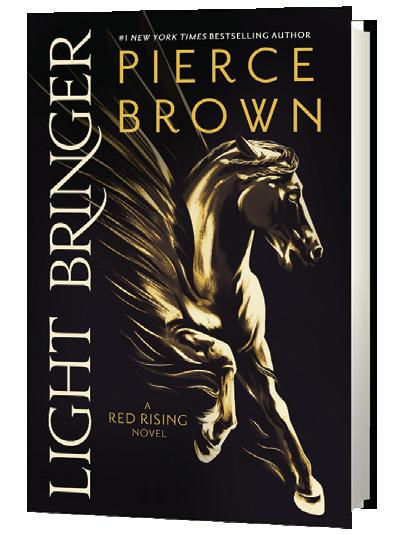
Dances: A Novel

978-0-593-49815-6 | $27.00/$37.00C | One World | HC
e 978-0-593-49816-3 | DN: 978-0-593-66308-0
Aballerina at the height of her powers becomes consumed with finding her missing brother in this “striking debut” (Oprah Daily). For more discussion questions visit: TinyUrl.com/DancesBCKit
Old Enough: A Novel
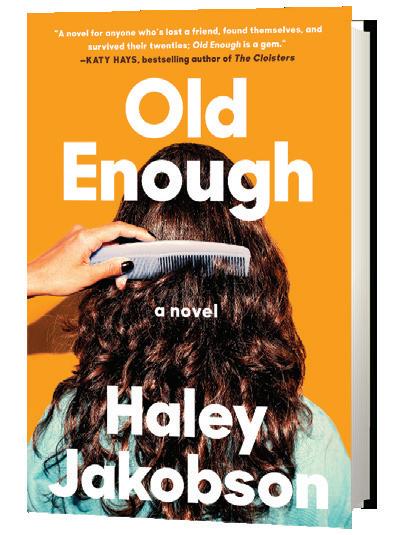
978-0-593-47300-9 | $27.00/$37.00C | Dutton | HC | June 2023
e 978-0-593-47301-6 | DN: 978-0-593-74160-3
Adebut novel about a young bisexual woman who is pulled between the new life she’s creating for herself and the life she worked so hard to escape.

978-1-368-07773-6 | $18.99/$25.99C | Disney Hyperion | HC
You can only hide from your nightmares for so long.
Seventeen-year-old Hylee Williams didn’t ask to disappear. But she did disappear, and not only that, but when she vanished from our world, she materialized in a dark, twisted version of the night that changed her life forever: the night her older brother went missing.

978-0-593-54685-7 | $27.00/$37.00C | Berkley | HC
e 978-0-593-54687-1 | DN: 978-0-593-67554-0
Part gripping thriller and part mythological horror, a young Native girl hunts for answers about a string of disappearances, all while being haunted herself.

978-1-5247-4841-8 | $35.00/$47.00C | Pantheon | HC
e 978-1-5247-4842-5
Abrilliantly original debut graphic novel that imagines a fantastical alternate Cairo where wishes really do come true. Shubeik Lubeik—a fairy tale rhyme that means “your wish is my command” in Arabic—is the story of three people who are navigating a world where wishes are literally for sale.

“Your wish for a successful mixture of high concept fantasy, biting humor, and powerful moral struggles is granted.”
—School Library Journal, Adult Books for Teens
978-0-593-59940-2 | $28.00/$37.99C | Random House Worlds | HC
e 978-0-593-59941-9 | DN: 978-0-593-67713-1
Adamsel in distress takes on the dragon herself in this epic twist on classic fantasy. Based on a screenplay by Dan Mazeau, this is a groundbreaking collaboration between New York Times bestselling author Evelyn Skye and the team behind the upcoming Netflix film Damsel, starring Millie Bobby Brown.
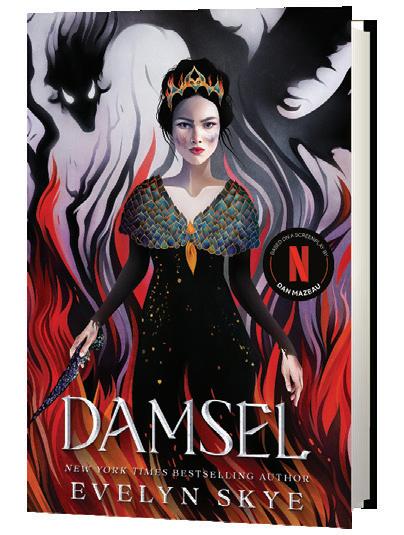

978-1-64473-831-3 | $28.00/$37.00C | Vintage Español | HC
This powerful and moving novel from the New York Times bestselling author of A Long Petal of the Sea and Violeta weaves together past and present, tracing the ripple effects of war and immigration on one child in Europe in 1938 and another in the United States in 2019.
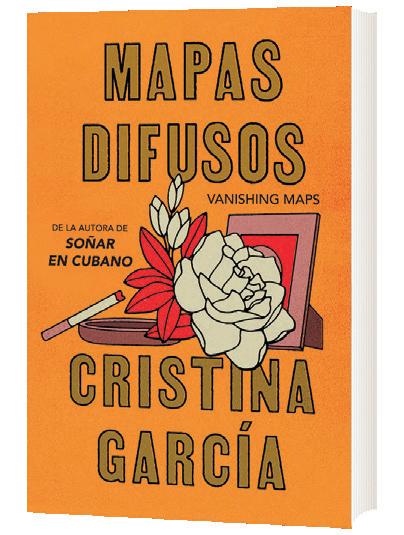
978-1-64473-847-4 | $18.95/$24.95C | Vintage Español | TR
From the acclaimed author of Dreaming in Cuban, a follow-up novel that tracks four generations of the del Pino family against the tumultuous backdrops of Cuba, the U.S., Germany, and Russia in the new millennium. “A beautiful novel: hilarious one moment, haunting the next.”
—Chris Bohjalian, author of The Flight Attendant and The Lioness
978-1-64473-817-7 | $20.95/$27.95C | Vintage Español | TR
From the award-winning, bestselling author of When I Was Puerto Rican, a powerful novel of family, race, faith, sex, and disaster that moves between Puerto Rico and the Bronx, revealing the lives and loves of five women and the secret that binds them together.


978-84-397-3971-5 | $19.95/$25.95C | Vintage Español | TR
From the two-time Pulitzer Prize-winning author of The Underground Railroad and The Nickel Boys, this gloriously entertaining novel is “fastpaced, keen-eyed and very funny ... about race, power and the history of Harlem all disguised as a thrill-ride crime novel” (San Francisco Chronicle). Harlem Shuffle’s ingenious story plays out in a beautifully recreated New York City of the early 1960s. It’s a family saga masquerading as a crime novel, a hilarious morality play, a social novel about race and power, and ultimately a love letter to Harlem.
For Spanish-language book club kits, please visit: TinyUrl.com/BCKitsenespanol
Finish the book on time; hear beloved voices read to you; play an audio excerpt at a meeting to enliven discussion . . . there’s no end to the many ways that audiobooks can enrich any book club. Here are just a few great listening recommendations:
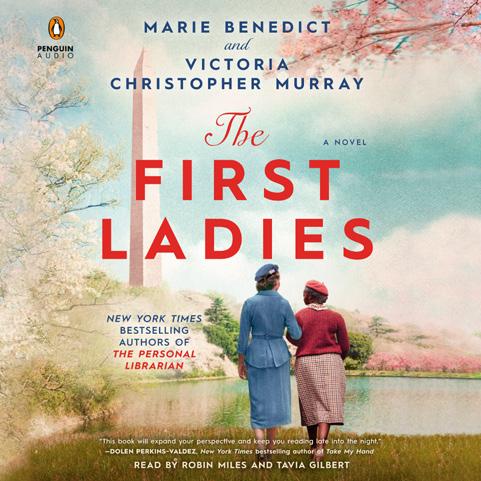
Read by Robin Miles and Tavia Gilbert | CD & Audio Download
The bestselling authors of The Personal Librarian are back! This new audiobook is read by two award-winning narrators who beautifully bring to life the extraordinary partnership between First Lady Eleanor Roosevelt and civil rights activist Mary McLeod Bethune—an unlikely friendship that changed the world.
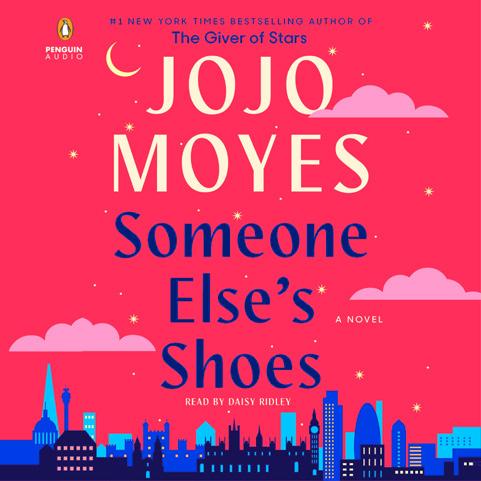
Read by Daisy Ridley | CD & Audio Download
Star Wars actress Daisy Ridley reads this bestselling story of mix-ups, mess-ups and making the most of second chances. Listeners will love to discuss the question: Who are you when you are forced to walk in someone else’s shoes?
Audio Download
Turn your book club into a ghost club with this audio original from the acclaimed author of American Sherlock and the host of multiple true-crime podcasts! The Ghost Club is a tale that is spooky, spine-tingly, and real. Who doesn’t love a creepy ghost story?

Audio Download
In her coming-of-age memoir, refugee advocate Luma Mufleh narrates her tumultuous journey to reconcile her identity as a gay Muslim woman and a proud Arab-turned-American refugee.

Sign up for our free e-mail book club and receive daily excerpts from just-published books in your inbox. We’ll bring you the best in Mystery, Suspense, Romance, Memoir, Literary Fiction, and more.

The club is perfect:
• As a Readers’ Advisory tool.
• To share with your patrons.
• As a great way to dip in to some of the best new books.


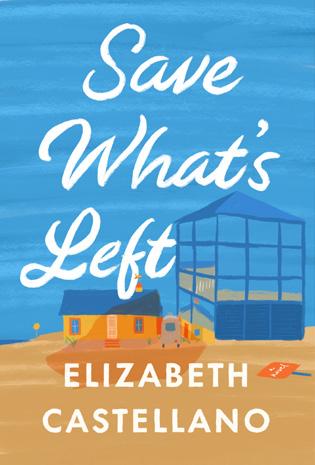
• For the chance to win free books.
